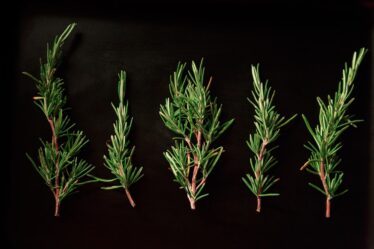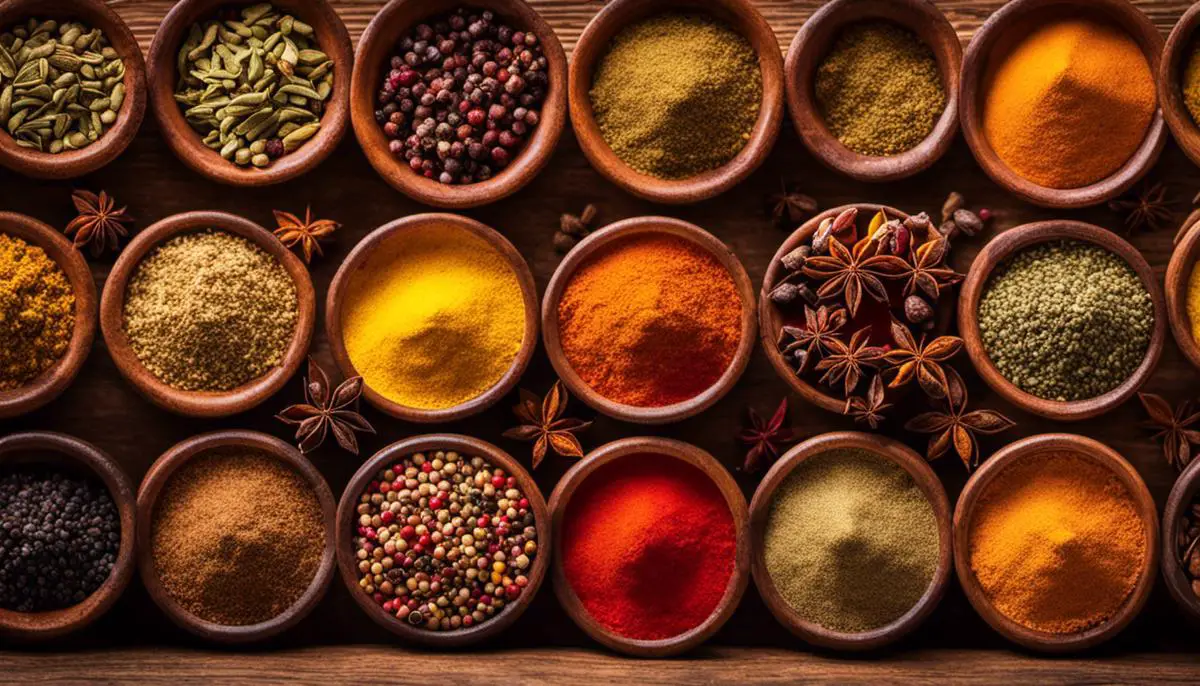
The allure of exotic cuisine often lies within the captivating blend of spices that are seamlessly weaved into the dish. From the fiery unfold of heat in curry powders to the rich, sweet essence of cinnamon, spices unequivocally serve as the invisible, yet indispensable thread tying every glorious plateful of food together. This piece aims to delve into the universe of spices – their distinct flavors, origins, and purposes, while offering comprehensive guidance on how to store them impeccably. As you read on, you’ll discover the prime conditions that best preserve their freshness and subsequently, the quintessential containers and optimal locations for spice storage.
Understanding different types of spices
Expounding Cuisine Magic: A Showcase of Spices and Their Attributes
There’s something inordinately magical about spices and how they gracefully enchant any dish, adorning it with their unique characteristics. With a repertoire as diverse as the world’s many cuisines, these vibrant flavor enhancers nurture connections among cultures and individuals through food. Spices commend an artful balance between flavors, requiring a keen understanding of their nature and uses. Uncover the veil and immerse in the thrilling adventure of studying these culinary masterpieces!
Right at the top of the echelon, chilies cannot be overlooked. Hailing from Capsicum annuum, these spicy virtuosos range from pleasantly mild to fiery hot. Whether it’s the radiant red Cayenne pepper or the smoky Chipotle, the right chili can effortlessly elevate a dish’s heat and depth.
Coriander, commonly referred to as cilantro, skilfully plays a dual role. Its seeds, when ground, unleash a nutty, mildly sweet flavor, perfect for robust curries and stews. On the other hand, the leaves provide a fresh, citrusy note that beautifully contrasts with spicy components.
Considered the queen of spices, Cardamom graces a variety of desserts and savory dishes. It possesses a complex flavor profile, boasting sweet, spicy, and floral notes. Its euphoric aroma makes it an unmissable ingredient in traditional Indian chai and many Scandinavian baked goods.
Cumin, a spice staple in Middle Eastern, Asian, and Latin American cuisines, offers an earthy, warm flavor detailed with hints of lemon and peppercorn. Roast these seeds to intensify their robust character, perfect for flavoring meat or vegetable sautés.
Regarded as a darling of the spice world, Vanilla wields a delicate sweetness ballasted by a subtle, woody undertone. Sought after largely for desserts, it also holds its own in savory dishes, garnering appreciation from sophisticated palates appreciative of culinary surprises.
Curcumin-rich Turmeric has been lauded for its golden hue and bountiful health benefits. This mild, slightly bitter spice yields an excellent base supporting other vibrant flavors in the dish. Think fragrant curries, golden lattes, or comforting soups.
Star Anise, a star-shaped spice originating from China, is marked by its licorice-like flavor. Its sweet, spicy, and slightly metallic undertones offer a unique depth, making it essential in several Asian meat and soup recipes.
Navigating the spice world can seem an overwhelming task, with its vast expanse and depth of flavors. But isn’t that part of the fun? Embrace the challenge, experiment, taste, and adjust. With every pinch, sprinkle, or spoonful, we’re able to share in a universal language — the language of food, creating meals and memories that speak volumes. So, go on, discover the tantalizing charm of these spices and their contributions to the global culinary stage — each dish, a conversation; every flavor, a story.
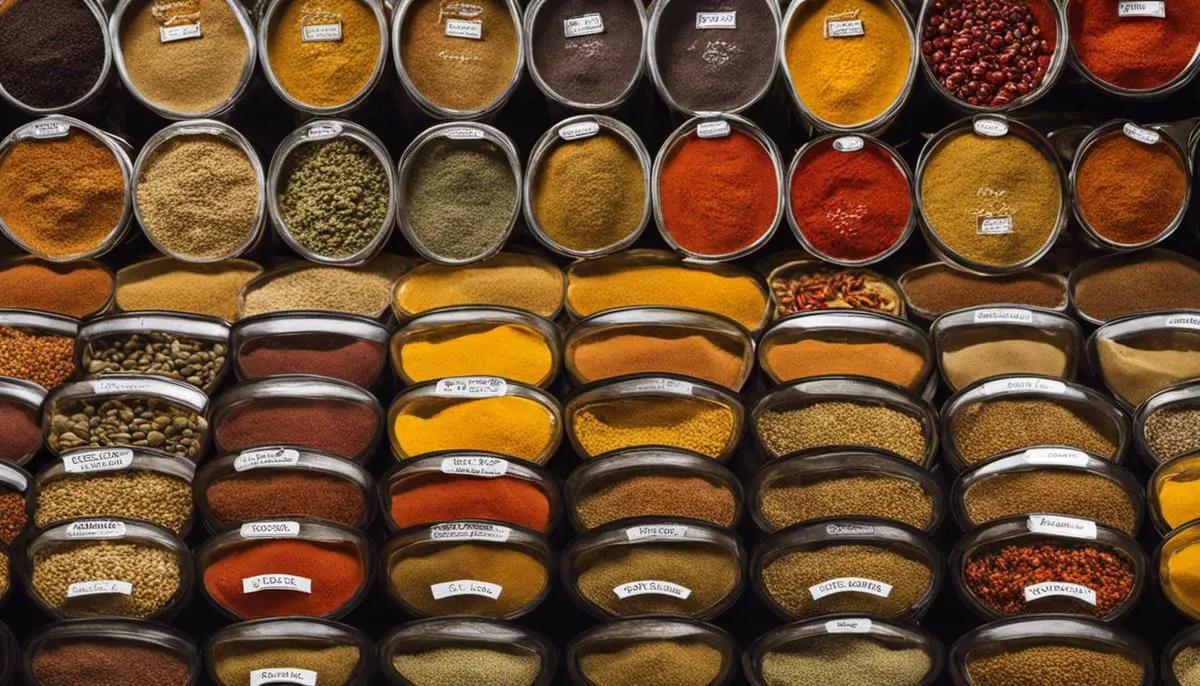
Ideal conditions for storing spices
Storing Spices – A Guide to Spice Preservation
When you’re fond of experimenting with flavors, you’ll realize that spices are equivalent to the culinary paint on a chef’s palette. As food enthusiasts, having an array of spices at our beck and call is what sets our tongues tingling in anticipation. However, there comes the tricky part, storing these precious flavor packets. Just like any prized possession, they require meticulous care. Let’s dive into how to best preserve these aromatic wonders.
Whole or Ground?
Before diving into storage, it’s vital to understand the difference between storing whole and ground spices. Whole spices are hardy and last longer, due to their protective outer layers. Ground spices, meanwhile, lose their flavor more quickly because of the increased surface area exposed to air. Ergo, it’s best to buy whole spices and grind them as needed for the freshest flavor.
Light and Temperature Management
Sunlight is great for tanning, but it’s terrible for spices. They detest sunlight; it’s like Kryptonite to them. Store your spices in a cool, dark place, ideally away from heat sources such as stoves or ovens, since heat can lead to flavor degradation. In short, your pantry or a dark cabinet would be perfect!
Container Talk
Not all containers are created equal when it comes to storing spices. While plastic seems practical, it’s highly porous, which means it lets in more air and light which accelerates the aging process of spices. So, avoid the plastic route. You love your spices right? Then they deserve glass. Airtight, amber colored glass containers are the best. Amber because it filters out ultraviolet (UV) light and airtight because, well, oxygen is not a spice’s best friend!
Our Spice Clock
No, that’s not a clock made of spices, although that sounds like an excellent DIY kitchen project. A spice clock refers to the shelf life each type of spice generally has, setting a timeline to use them. Whole spices last about 3 to 4 years, all thanks to their external layer acting as a miniature armor. Ground spices have a lifespan of about 2 to 3 years. After that, they tend to lose their vigor. We all know, cooking is about flavor, not dullness.
Spice Organization
Remember, you’re an culinary artist, your spices are your paints, so don’t leave them neglected in the back of a drawer. Organize your spice rack by cuisine or by use frequency, but whichever way you choose, keep it consistent! This will make it easier to find what you’re looking for when you’re in the middle of a culinary masterpiece.
Remember, while this guide provides you with general tips for storing spices, there isn’t a one-size-fits-all approach. Some spices, like saffron or sumac, might require more specific conditions. Therefore, reading up on each particular spice’s storage requirements is always recommended.
Happy Cooking! So, go forth, and let that spice rack be the soul of your kitchen!
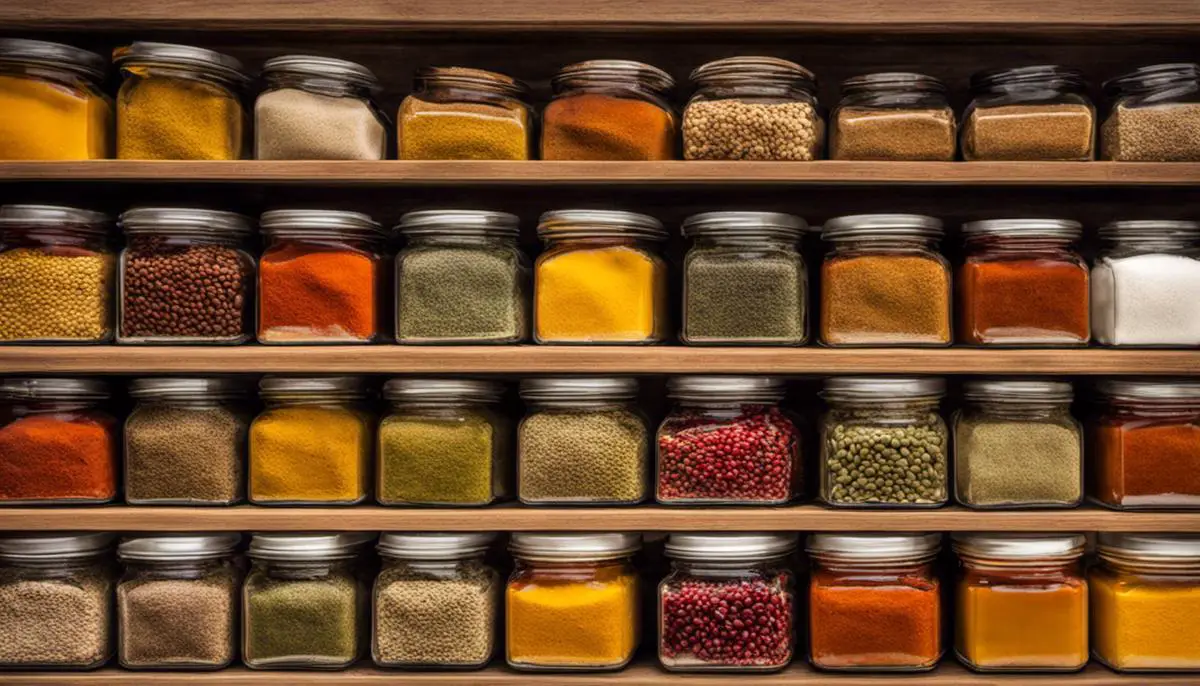
The best containers and locations for spice storage
Spices are the mythical creatures of the culinary world—their potential and power to transform a dish are legion. However, draw back the curtain of folklore, and you’ll find that while spices do carry a touch of magic, their preservation is pure science. So, dear aspiring culinary magicians, let’s turn our attention to the most suitable containers and locations for storing spices.
Containers are the first line of defense in protecting your spices. Remember: exposure to air is the arch-nemesis of these flavorful nomads. In the combat against oxidation, airtight containers prove to be heroes. Consider your options: glass jars with rubber gasket seals, sturdy plastic containers with snap-on lids, or even ceramic canisters with cork stoppers. All these styles function excellently, provided they form a firm seal when closed.
Do you lean towards an eco-friendly side? Reuse jam jars or small glass bottles – a perfect fit for spices! The next thing to consider is the color. While shiny, clear glass jars may paint an appealing visual, they aren’t particularly effective at shielding vulnerable spices from light exposure. To champion this challenge, opt for tinted or opaque containers.
Now that we’ve picked a suitable spice sanctuary, it’s time to explore the ideal dwelling place. Lack of light is key here, so wave a hearty goodbye to window sills and overhead bulbs. Spices, much like vampires, prefer the dark. And the same goes for temperature – spices are rather delicate and hence, heat is not their best friend. Storing spices directly above the stove isn’t the wisest option.
Culinary enthusiasts, let us not forget about moisture. Steam from boiling water or the oven can be detrimental. It’s best to keep the aromatic gems in a cool, dry place where they are not directly exposed to varying temperatures. Your pantry or a dedicated spice drawer would be an excellent choice.
Labelling cannot be overstressed. Your twelve types of smoky paprika may look identical, but their tastes are astral worlds apart. So, keep the stickers, markers, and labels at hand. Organize your spices alphabetically, by cuisine, or even by the frequency of use, and soon, finding Za’atar amidst the sea of spices will be as easy as pie.
Last but not least, be mindful that different spices have unique personalities and therefore, different storage needs. Saffron, for instance, fares well in the refrigerator while poppy seeds stay fresh longer when stored in a freezer. Research holds the key to a long and happy spice life.
Venturing into the world of spice is a thrilling journey — one laden with delightful surprises and learned wisdom. And with these helpful tips about containers, storage locations and organization, mastering the art of spice storage can be as satisfying as exploring their myriad flavors. Happy cooking, fellow flavor travelers!
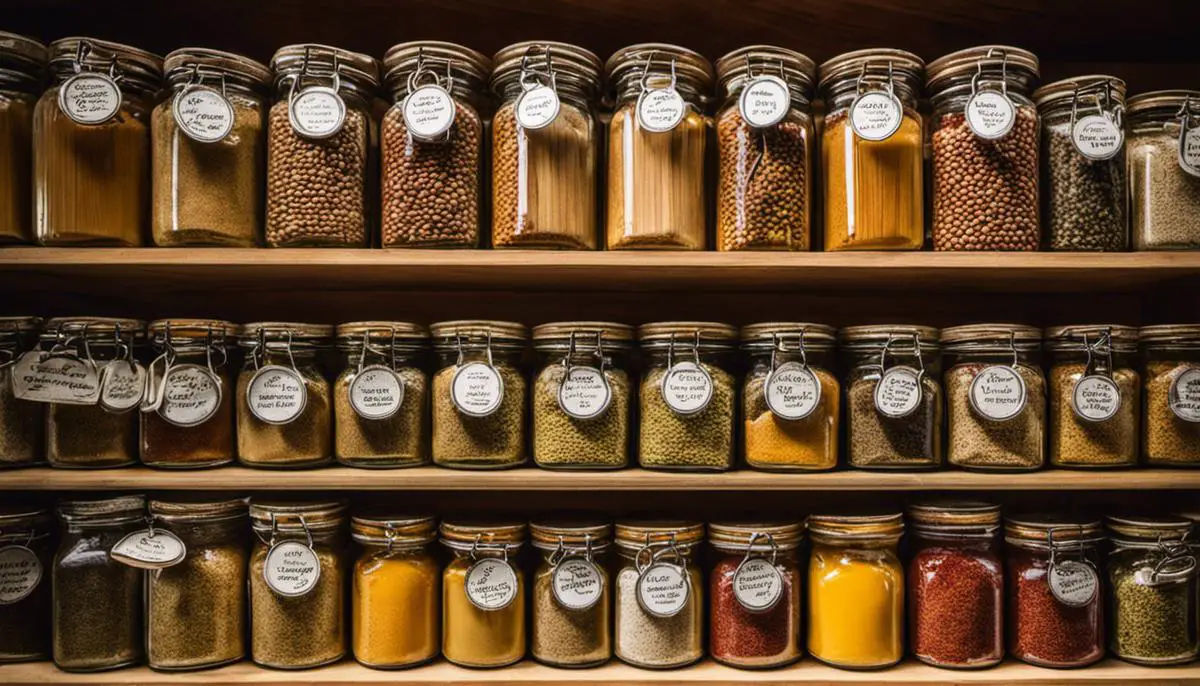
This exploration of spices and the art of preserving their aroma and taste, draws attention to the significant role they play in our culinary adventures. Like fine wine, spices too, deserve great care and attention in the way they are stored. With the insights given into considerations like light, temperature, humidity, along with ideal containers and locations, you now have in your hand, the secret to prolonging the life of your spices and maintaining the quality of your home-cooked meals. Remember, whether it’s the heat of cayenne pepper or the bright tang of sumac, each spice holds the potential to transport us to different corners of the world, right from the comfort of our kitchen.



